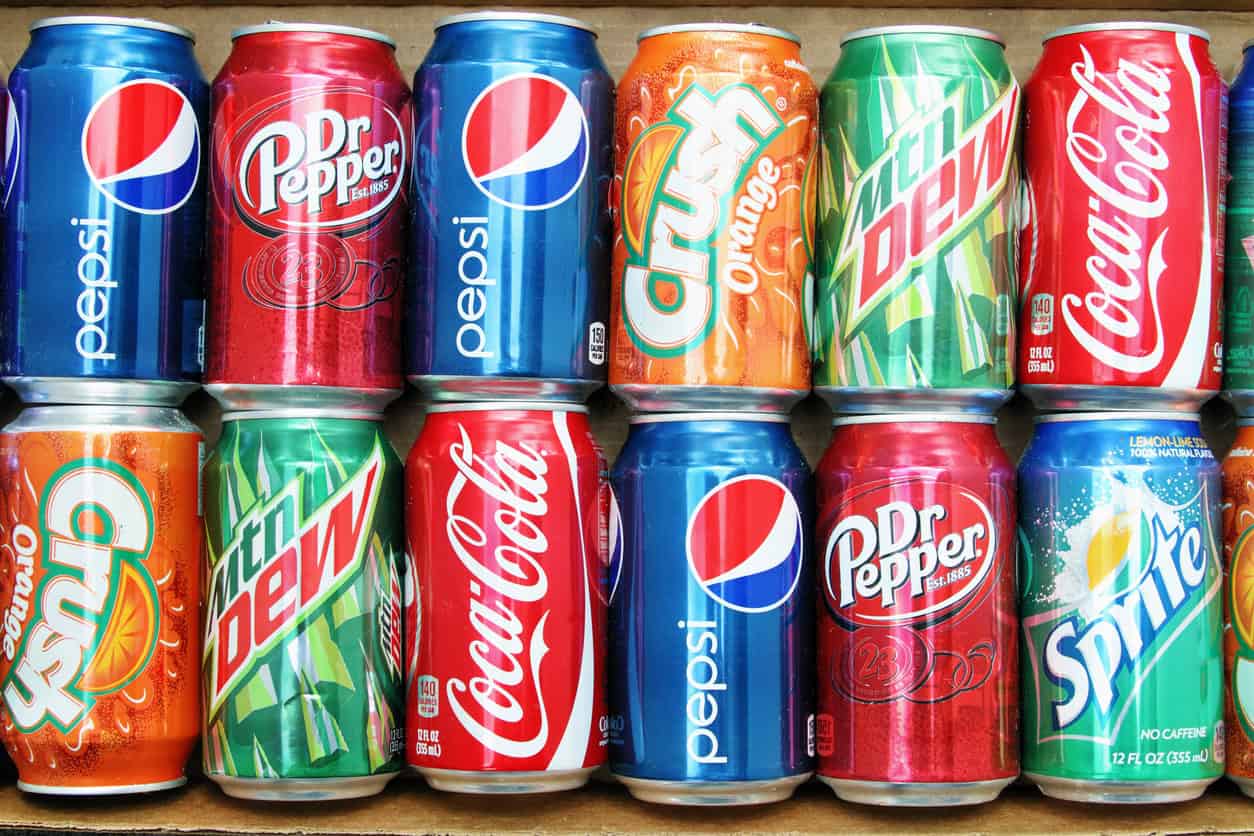
iStock.com/NoDerog
How Did Dr Pepper Catch Up to Pepsi?
After decades as a distant contender, Dr Pepper shocked many by recently tying Pepsi as the second-most-popular soda in the U.S., prompting discussions around the drivers of Dr Pepper’s success.
According to data shared with the Wall Street Journal, classic Coke dominates the category with a 19.2% share of the soda market in the U.S. by sales volume, followed by Dr Pepper and Pepsi, both at 8.3%, although Dr Pepper is ahead slightly.
Dr Pepper was founded in Waco in 1885, with Coca-Cola arriving in 1886 and Pepsi in 1898. Coke was the first to take off on a national basis, and its battle with Pepsi erupted into the “Cola Wars” in the 1980s.
Dr Pepper’s first break was winning a lawsuit in the 1960s that concluded Dr Pepper wasn’t a cola. For decades, bottler contracts with either Coke or Pepsi prevented distributors from selling a brand similar to cola. With Dr Pepper proven not to be a cola, the drink began showing up on both Coke and Pepsi soda fountains at fast-food chains across the nation, provoking trial as an alternative.
Innovative marketing, including its “I’m a Pepper” jingle, elevated brand awareness in the 1970s to help Dr Pepper land as the third-largest soda seller by 1981. The brand’s unique flavor, blending 23 flavors and often described as “sweet and spicy,” also has long helped Dr Pepper stand out against the cola brands.
In the following decades, Dr Pepper lost ground due in part to the arrival of new sodas, including Diet Coke, and the brand was sold a few times. It’s now owned by Keurig Dr Pepper Inc., which also counts 7UP, Crush, and Canada Dry among its soda brands.
In recent years, Dr Pepper’s flavor is seen giving the brand a bigger edge as America’s palette has become more receptive to spices. Also helping Dr Pepper in recent years is heavy investments in digital marketing and advertising positioned around college football.
The brand has also benefited from introducing new flavors, such as 2022’s limited-edition Dr Pepper Bourbon Flavored Fansville Reserve and 2023’s Dr Pepper Strawberries & Cream, which the company added to its permanent lineup. The flavors helped some testers become more frequent drinkers of regular Dr Pepper while also reaching new customers.
“Dr Pepper has capitalized on the growing consumer desire for flavored soft drinks,” Duane Stanford, editor and publisher of Beverage Digest, told the Guardian. “That’s especially true for young and Hispanic customers.”
Relatedly, Dr Pepper has garnered online attention due to a phenomenon that has seen TikTokers experimenting with new flavor concoctions with Dr Pepper as a base, including a post in May that went viral of someone mixing Dr Pepper with pickles at a Sonic. A just-released flavor, Dr Pepper Creamy Coconut, was inspired by the “dirty soda” trend (mixing soda with milk or cream and other flavors).
Some articles called out the shortcomings of Pepsi, whose market share was as high as 14.99% in 1995. Pepsi has said that across its Pepsi lineup, which includes Diet Pepsi and Pepsi Zero Sugar, it remains the No. 2 soda trademark in the country, and its focus is currently on Pepsi Zero Sugar and energy drinks as people overall are drinking less soda.
Discussion Questions
What factors are likely most responsible for Dr Pepper’s ascension to tie with Pepsi as the second-largest soda brand in the U.S.?
What steps should Dr Pepper take to build on its momentum?
Is Pepsi smart in reducing investments in its flagship Pepsi product in favor of sugarless sodas and energy drinks?
